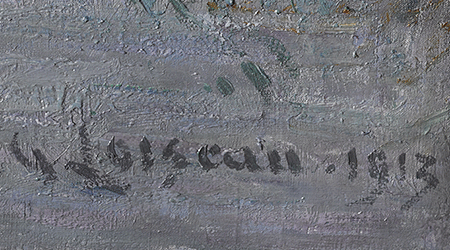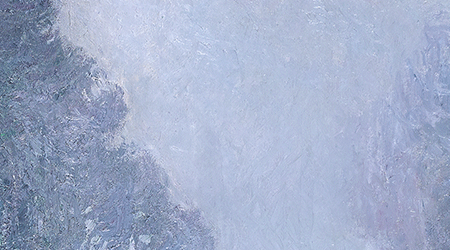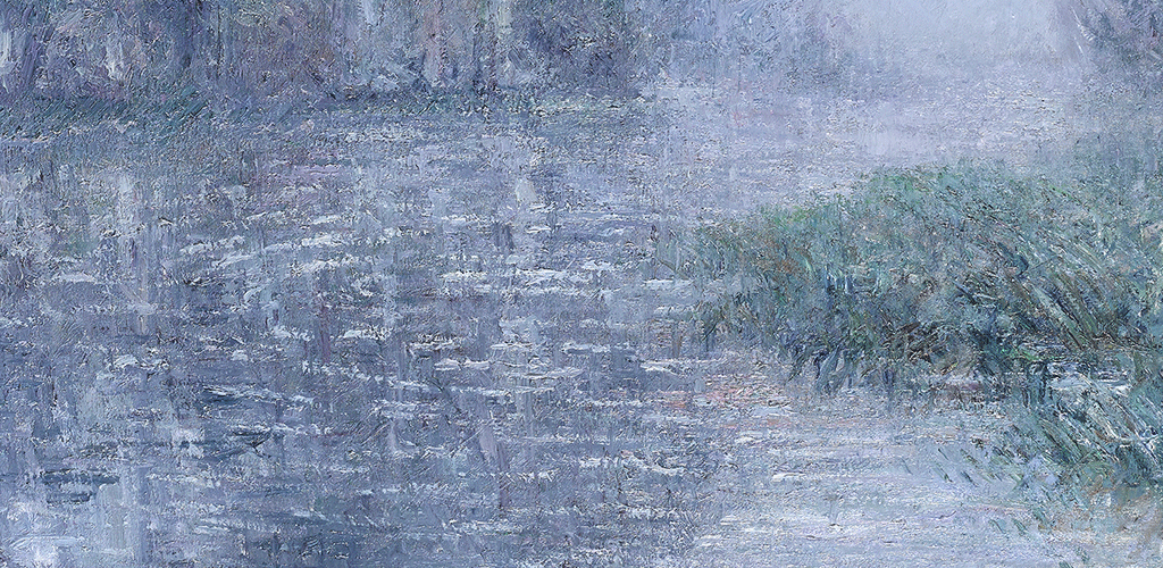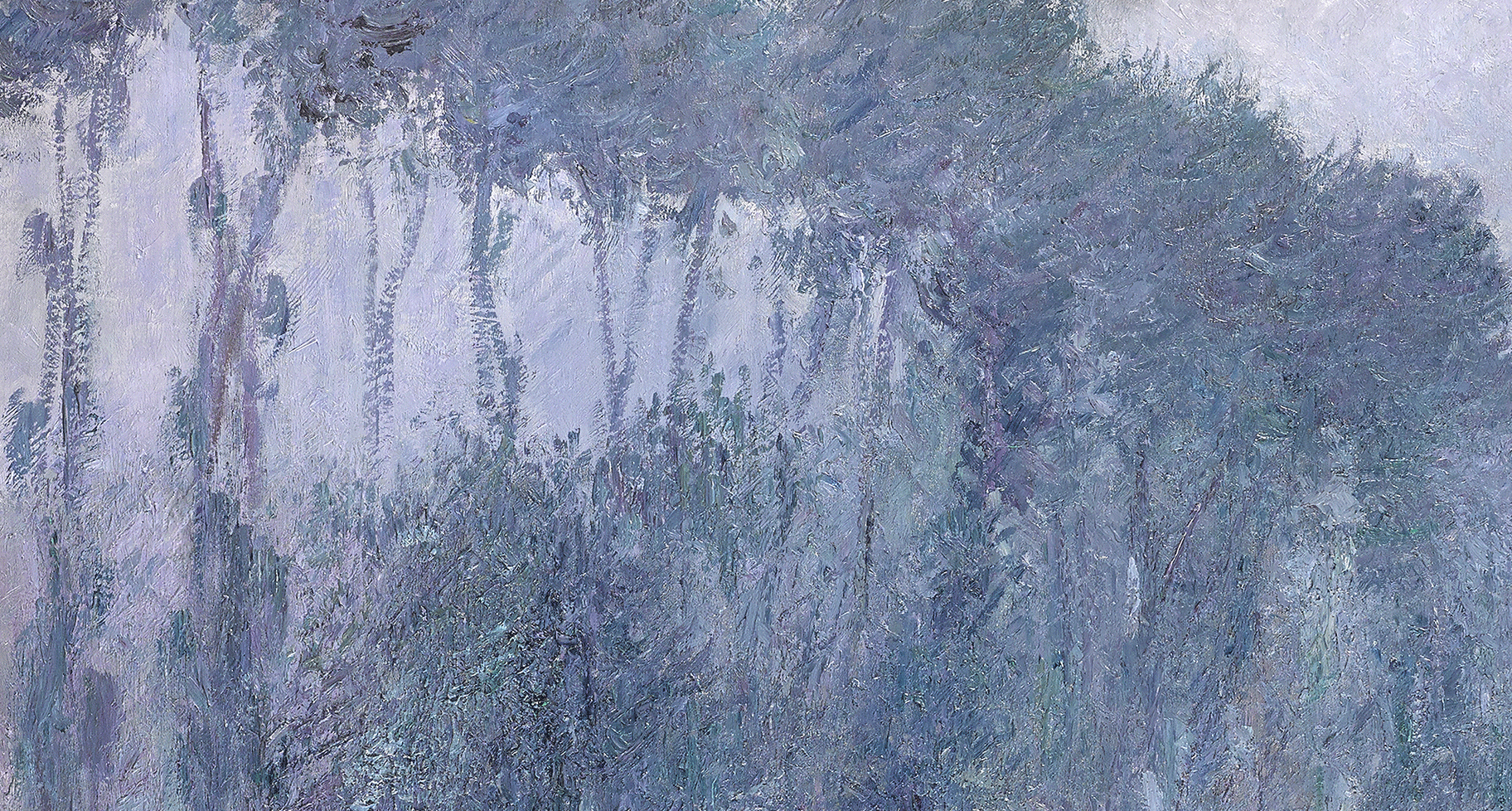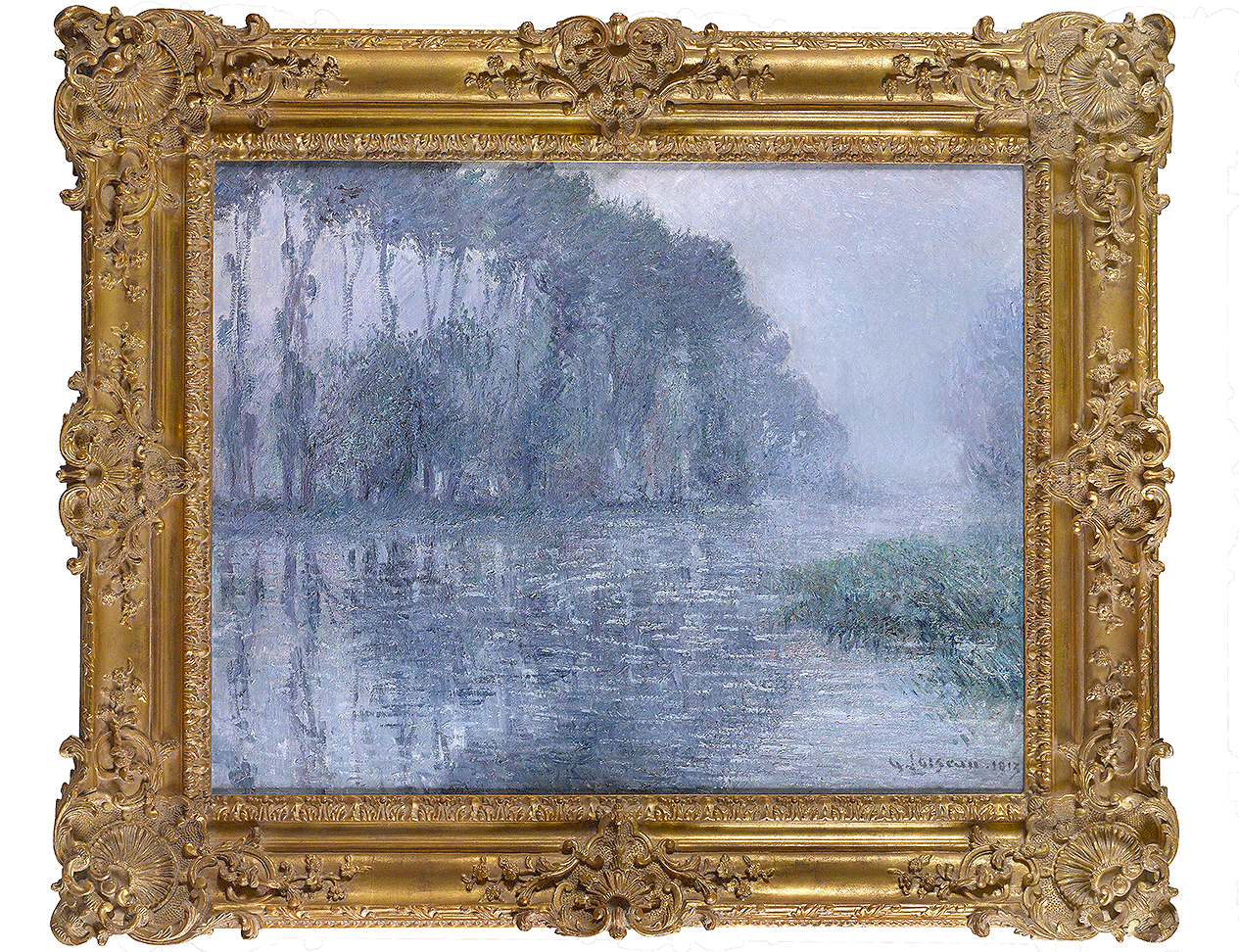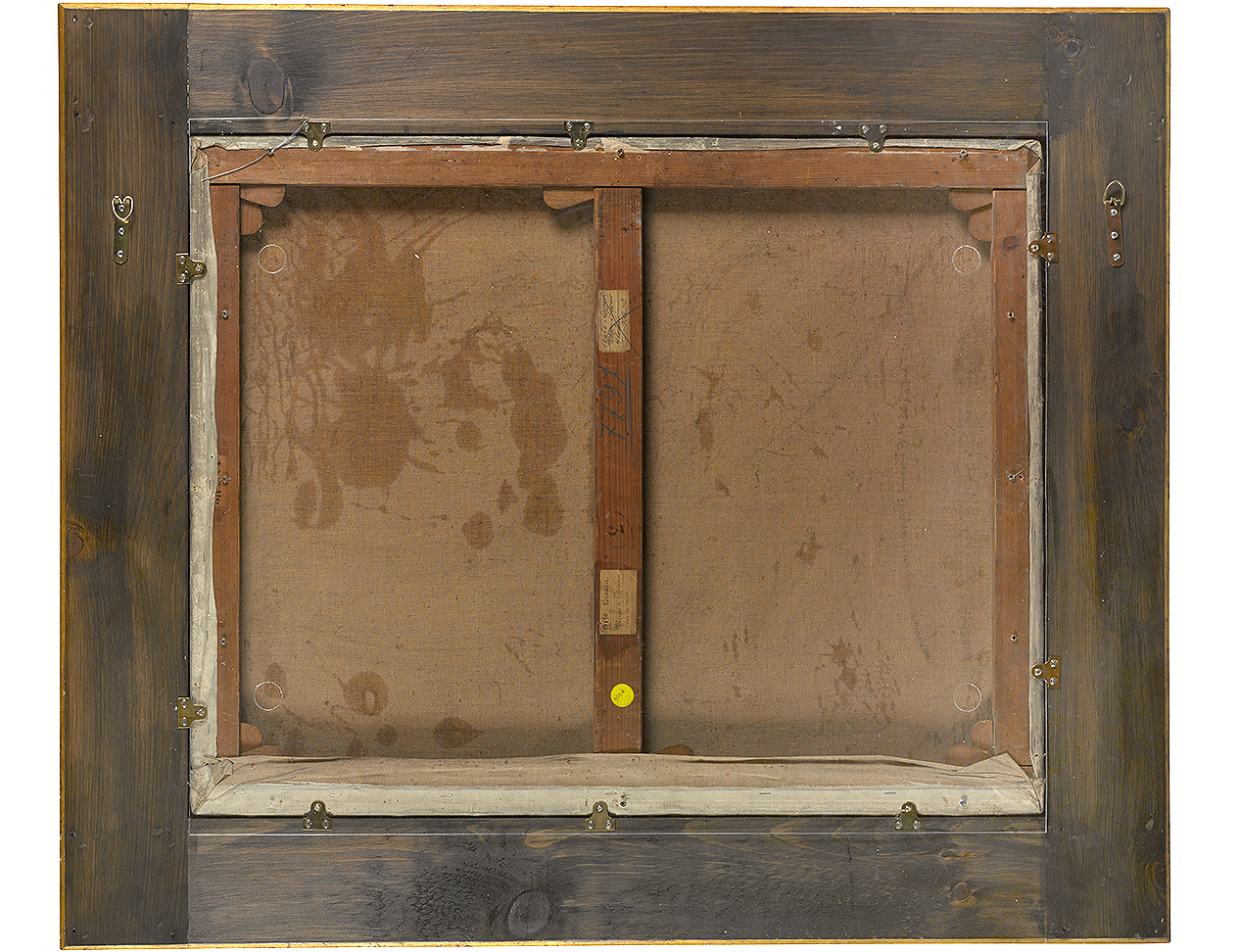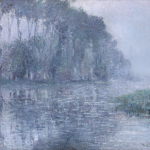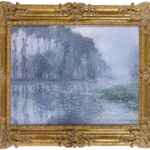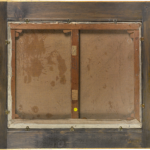Provenance
Durand Ruel, Paris (acquired from the artist 7 November 1913, stock no. 10456/13190, photograph no. 77976)
Private collection, France (acquired from the above 1 February 1985)
Private collection, Brittany (acquired before 1996)
This work will be included in the forthcoming catalogue raisonné being prepared by Didier Imbert.
Bords de la Seine exemplifies Gustave Loiseau’s lifelong fascination with the Seine and its tributaries. Highly characteristic of Loiseau’s en plein air technique, the present work captures the movement of the water, the stillness of the trees, and the enveloping mist of the river in the early evening light.
Although taught by Paul Gauguin, it was Loiseau’s close friend Claude Monet who would ultimately have the stronger influence over the artist. Having signed an exclusive contract with Monet’s influential dealer Paul Durand-Ruel in 1897, Loiseau was able to travel extensively throughout Normandy. Journeying down the Seine from source to mouth provided Loiseau with the inspiration for his most significant and successful body of work. Bords de la Seine is a particularly intense example of his directly observed studies of the river. The palette of soft lavenders and lilacs, muted greens and delicate white create a painting that is as much an expression of a mood as a depiction of a place. It is a particularly subtle demonstration of the reason behind the artist’s reputation as the ‘historiographer of the Seine’.
Loiseau was born in Paris. He was apprenticed to a decorator, a job he particularly disliked, but his interest in art (especially landscape painting) grew when his parents moved back to their hometown of Pontoise in 1884. This town near Paris had an important place in French painting at the time, its environs having recently been depicted extensively by Camille Pissarro and Paul Cézanne, the former having a home there.
Loiseau announced his intentions to become an artist in 1880, aged just 15. However, it was not until 1887, when Loiseau received a legacy from his grandmother, that he was able to give up his job as a decorator and devote his life to painting. After a move to Paris, his first teachers included such illustrious names as Jean-Louis Forain, but Loiseau did not appreciate the more academic tendencies such artists promoted. It was not until a move to Pont-Aven in 1890 and his meeting with Henry Moret and Maxime Maufra that he found his style. He learned a great deal first hand from Gauguin, but his work also shows a debt to Alfred Sisley and Pissarro. After a period of pointillist experimentation, he re-discovered his pure landscape ideals painting in a Post-Impressionist manner directly from nature.
The artist returned to Paris in 1891 where he began to exhibit his work, showing first at the Fifth Exhibition of Impressionist and Symbolist Painters. For the rest of his life, he travelled extensively, painting in the Dordogne, Dieppe and on the banks of the Seine. Loiseau also painted an important series of works of Paris that form a fascinating development to the first Impressionist views of Monet and Pissarro. In these works, he took a high viewpoint and concentrated on the contrast between the small figures below and the large buildings, often shown with obvious advertising hoardings. Although he died in Paris in 1935, his last years were spent in Pontoise, where his introduction to painting had begun.
Today Loiseau is recognised as a significant figure in Post-Impressionism. His paintings are held in numerous public museum collections globally, including the Metropolitan Museum of Art, New York, the Musée d’Orsay, Paris, and the Fitzwilliam Museum in Cambridge, England.
